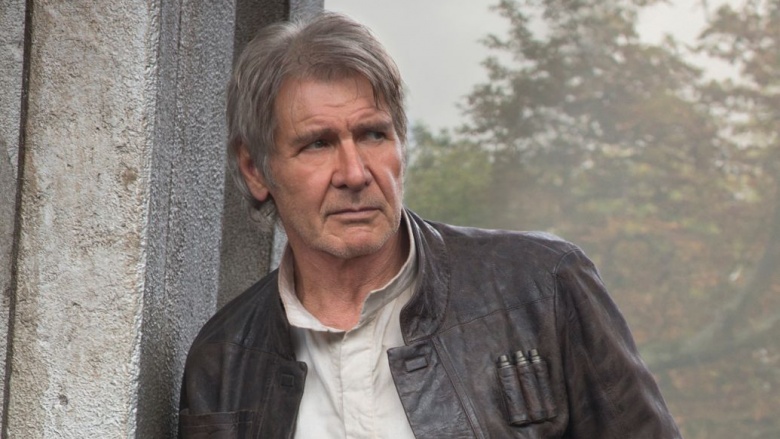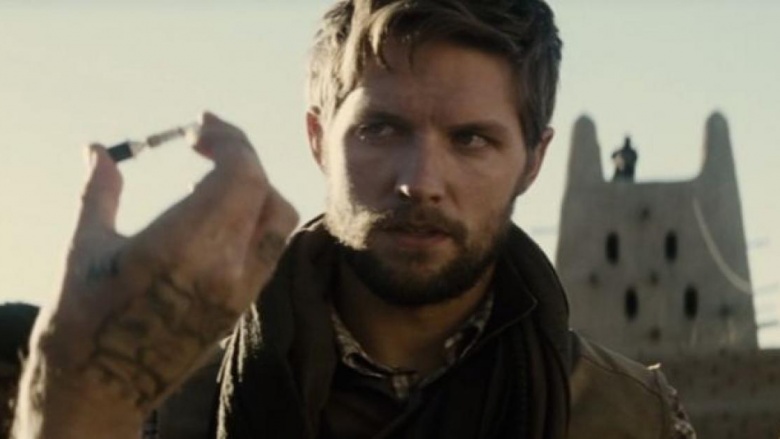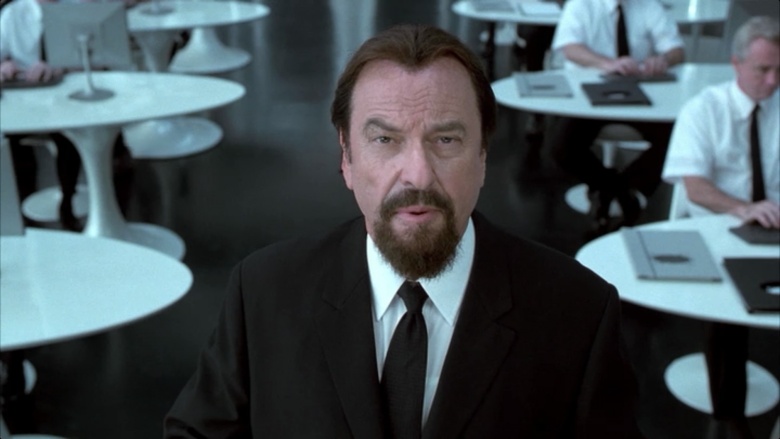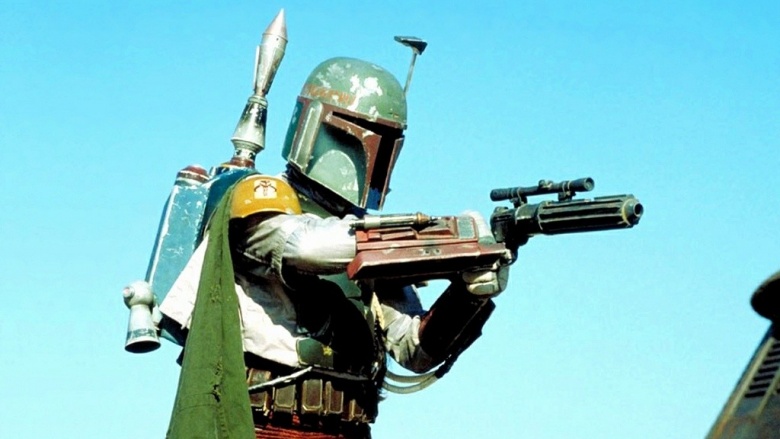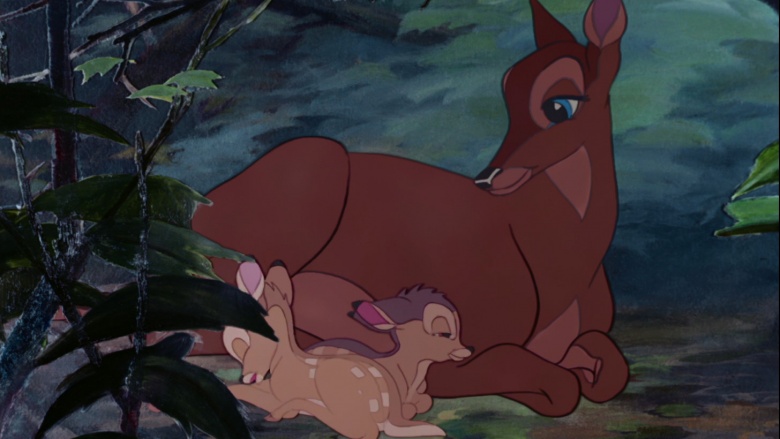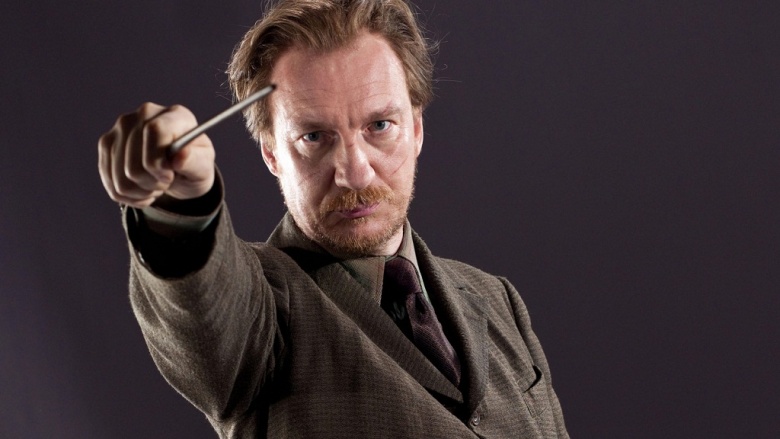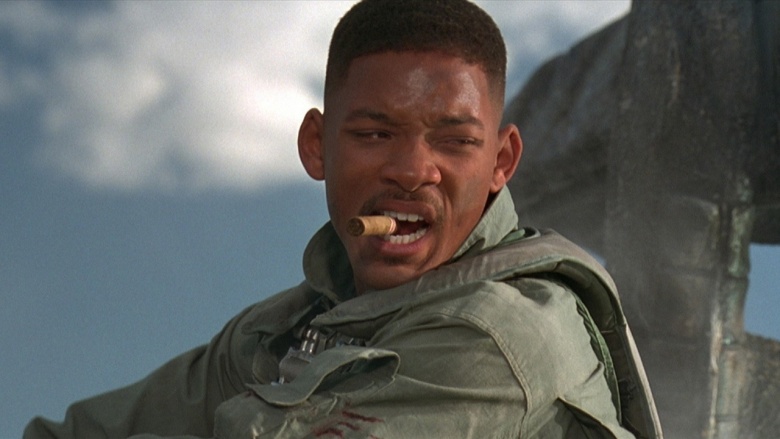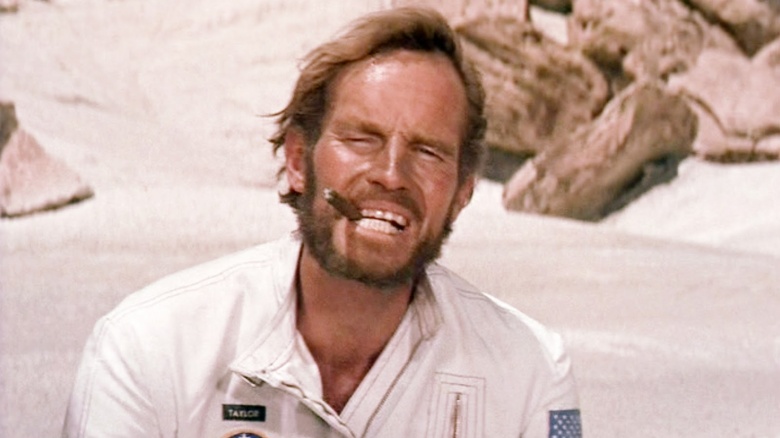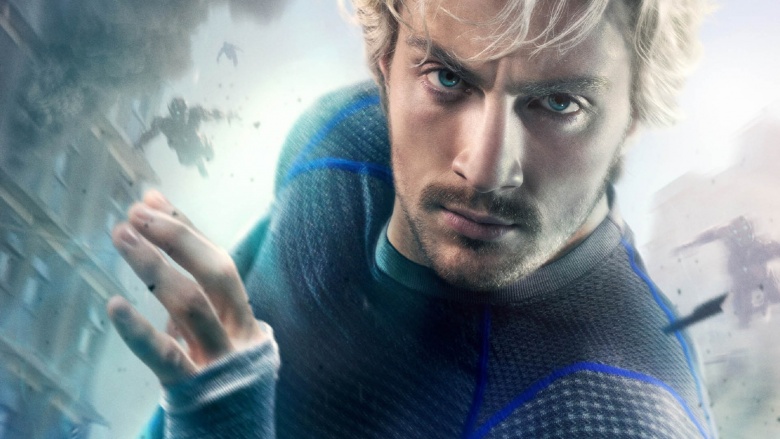Real Reasons These Movie Characters Were Killed Off
While it's possible to see a character's death coming from a mile away, sometimes it comes out of nowhere and leaves audiences shocked. These fictional deaths can occur for thematic or narrative reasons, or even merely for shock value. Sometimes, though, there are real-life factors behind the scenes that end a character's life. With that in mind, here's a look at the real reasons these onscreen lives were ended.
Han Solo (Star Wars: The Force Awakens)
Leading up to the release of Richard Marquand's Star Wars: Episode VI — Return of the Jedi, Harrison Ford argued that his character, Han Solo, should be killed off. Franchise mastermind George Lucas didn't agree; according to Ford, "George didn't think there was any future in dead Han toys." Since merchandising makes up a significant portion of LucasFilm's revenue, it isn't hard to see where Lucas was coming from.
"I thought the best utility of the character would be for him to sacrifice himself to a high ideal," Ford told Conan O'Brien in another interview, explaining he wanted Han to go out in a blaze of glory. But after decades of waiting, Ford finally got his wish: Han not only died in J.J. Abrams' Star Wars: Episode VII — The Force Awakens, but he was killed by his son, Ben Solo (a.k.a. Kylo Ren).
According to Abrams, he and screenwriters Michael Arndt and Lawrence Kasdan knew they needed to do something bold in order to have Kylo Ren stand out from Darth Vader's shadow. "Star Wars had the greatest villain in cinema history. So, how you bring a new villain into that world is a very tricky thing," he explained. "We knew we needed to do something f—ing bold. The only reason why Kylo Ren has any hope of being a worthy successor is because we lose one of the most beloved characters."
Furthermore, leading up to The Force Awakens' release, Abrams affirmed that Kylo Ren, in the film, was not yet a Sith. In the film's official novelization, Kylo's master, Snoke, told him of Vader's weakness for Luke Skywalker; to avoid that internal conflict and prevent himself from turning away from the Dark Side, Kylo knew he had to kill his father.
Jimmy Olsen (Batman v Superman)
It took almost three years for Zack Snyder's Batman v Superman: Dawn of Justice to arrive in theaters following the movie's announcement at San Diego Comic-Con 2013. During that time, fans speculated over who was playing whom, and which DC Comics characters would appear in the Man of Steel follow-up. Among the subjects of speculation: one of Clark Kent's closest friends, Daily Planet photographer Jimmy Olsen.
While there wasn't any official information regarding the character leading up to the movie's release, he did show up briefly in the beginning. Unfortunately, he also died. Initially, audiences weren't sure the photographer accompanying Lois Lane in the desert—and who turned out to be working covertly with the CIA—was Olsen, but Snyder later confirmed it, to the dismay of longtime comics fans.
"We just did it as this little aside because we had been tracking where we thought the movies were gonna go, and we don't have room for Jimmy Olsen in our big pantheon of characters," Snyder explained in an interview with Entertainment Weekly. "But we can have fun with him, right?"
Zed (Men in Black 3)
Loosely based on The Men in Black comics, Sony Pictures' Men in Black helped cement Will Smith's superstar status in the '90s. The movie follows Smith and Tommy Lee Jones' characters—agents of the titular secret organization—as they monitor aliens on Earth and protect the planet from any form of extraterrestrial attack.
Legendary actor Rip Torn appeared in the movie as Agent Zed, the head of the Men in Black, a role he reprised in the movie's sequel in 2002. Unfortunately, not only did he not appear in Men in Black 3 in 2012, but his character was killed off between the second and third installments. Director Barry Sonnenfeld said the reason for excluding Torn in the second sequel was a desire to make the movie appear new to longtime fans.
"We just felt that we used some of those characters too much in the second movie," Sonnenfeld argued. "We didn't want the movie to feel stale." While that may be true, it may not be the whole truth. Around the time Men in Black 3 started principal photography, Torn was serving a two-year suspended sentence (and three years probation) for breaking into a bank while heavily intoxicated.
Boba Fett (Star Wars: Return of the Jedi)
Initially appearing in the infamous Star Wars Holiday Special, Boba Fett—one of the galaxy's most notorious bounty hunters—made his big-screen debut in Irvin Kershner's Star Wars: Episode V — The Empire Strikes Back. Although he barely spoke a word, Boba Fett had the respect of Darth Vader, and he quickly became a fan favorite—which is why it came as such a shock when he was suddenly killed off at the beginning of the movie's sequel, Return of the Jedi.
George Lucas initially intended for the third installment in the original Star Wars trilogy to be all about Han Solo's rescue from the clutches of sluglike gangster Jabba the Hutt, which would then lead into another trilogy in which Luke Skywalker confronts the Emperor. In fact, in one of those movies, Boba Fett was going to be the big bad. "Boba was gonna be the main villain... That was the set up, why he was taking Han Solo away, why there was a thing with him in the Christmas special," LucasFilm's then-head of fan relations, Craig Miller, told Inverse.
However, according to Miller, Lucas got tired and decided to end the story with the third movie. So, instead of setting up a future fight between Solo and Fett, Lucas opted just to kill off the bounty hunter. "When George decided not to make a third trilogy, he completely jettisoned that storyline," he recalled. "Which is why in the first ten minutes, Boba Fett gets bumped into and falls into the mouth of a giant monster." There's still hope, though, for Boba Fett to come back in a future Star Wars anthology film.
All the mothers in Disney movies
It's no secret that Disney animated movies lack their fair share of mothers (and both parents, in some cases)—and those that do appear tend to die sometime during the movie. It's an ongoing, disheartening tradition that Disney has failed to openly acknowledge, but one of the studio's most prolific producers, Don Hahn, believes it's rooted in a heartfelt reason.
"Walt Disney, in the early 1940s, when he was still living at this house, also bought a house for his mom and dad to move into....when his mom and dad moved in, the furnace leaked and his mother died," Hahn said. "The housekeeper came in the next morning and pulled his mother and father out on the front lawn. His father was sick and went to the hospital, but his mother died. [Walt Disney] never would talk about it, nobody ever does. He never spoke about that time because he personally felt responsible ... he had become so successful that he said, 'Let me buy you a house.'"
While that's one reason, Hahn says another may be that Disney movies are about characters growing up and overcoming life's most arduous obstacles. "They're about that day in your life when you have to accept responsibility," Hahn pointed out. "Simba ran away from home but had to come back...Bambi's mother gets killed, so he has to grow up. Belle only has a father, but he gets lost, so she has to step into that position." Cruel, but unfortunately true.
Remus Lupin (Harry Potter and the Deathly Hallows: Part 2)
The final installment of J.K. Rowling's beloved Harry Potter series, Harry Potter and the Deathly Hallows, featured a full-scale war between the students and professors of Hogwarts against Voldemort and his army of Death Eaters. Known as the Battle of Hogwarts, the conflict took place on May 2nd—and in 2015, Rowling started a tradition of apologizing for one of the many deaths that occurred during that battle on its anniversary.
For her first apology, Rowling lamented the death of Fred Weasley, saying in a tweet, "Today I would just like to say: I'm really sorry about Fred. *Bows head in acceptance of your reasonable ire*." In 2016, Rowling continued the tradition by apologizing for the death of Remus Lupin, played by David Thewlis in the movies. In a statement to her Twitter followers, she said, "Once again, it's the anniversary of the Battle of Hogwarts so, as promised, I shall apologize for a death. This year: Remus Lupin."
Throughout the series, Harry Potter lost virtually every one of his father figures—Sirius Black, Albus Dumbledore, Remus Lupin—except for Arthur Weasley. The fact is, Rowling felt that either Remus or Arthur had to die, and she ended up choosing the former. "In the interests of total honesty, I'd also like to confess that I didn't decide to kill Lupin until I wrote Order if the Phoenix. Arthur lived, so Lupin had to die," she wrote. "I'm sorry. I didn't enjoy doing it. The only time my editor ever saw me cry was over the fate of Teddy."
Col. Steven Hiller (Independence Day: Resurgence)
Will Smith is one of the biggest movie stars in the world, and some pundits believe that in the future, there may never be an actor who approaches the box-office clout he enjoyed at his peak. While studios like Warner Bros. are willing to pay big bucks to nab Smith for a leading role, 20th Century Fox and Roland Emmerich weren't willing to do the same—which is why Smith doesn't appear in 2016's Independence Day: Resurgence.
In 2013, when the studio was gearing up to enter pre-production on the Independence Day sequel, Emmerich told the New York Daily News that he didn't expect Smith to return, saying he was simply "too expensive" to hire. "He'd also be too much of a marquee name," he continued. "It would be too much. We have like maybe half of the people that you know would know from the first film (in the script) and the other half people who are new."
To explain Smith's non-involvement in the movie, Emmerich and Fox launched an interactive website that details the events between the first and second movie—and one of the news reports indicated Smith's character, Colonel Steven Hiller, died during a military test in 2007. Smith later expressed sorrow over the decision to kill off his character, telling Yahoo! Movies, "The trailer looks really cool. I'm going to be sitting around with tears in my eyes when that one comes out. It was terrible when I found out my character died."
George Taylor (Beneath the Planet of the Apes)
Charlton Heston is one of the most respected film actors in Hollywood history, having starred in productions such as Ben-Hur, The Ten Commandments, and of course, Planet of the Apes. He played the main character, George Taylor, in the latter movie—a role he reprised for its sequel, Beneath the Planet of the Apes.
When Heston signed on for the first installment, however, he never planned on returning for a sequel. It was only after Planet of the Apes became an astounding success that 20th Century Fox started developing a follow-up. At the time, Heston had very little interest in reprising his role, but then-studio head Richard Zanuck felt he was integral to the sequel's story, despite the character being relegated to the background. After much negotiation, Heston agreed to return on the stipulation that his character would be killed off.
Later, Zanuck slashed the movie's budget by nearly half and decided it should be the story's final chapter. In response, Heston came up with the idea of having Taylor survive Planet of the Apes' opening act, only to disappear—and resurface at the end, just in time to detonate a massive bomb destroying the planet (and, by extension, the budding franchise). Of course, as fans are well aware, not even a bomb was enough to stop the series; in fact, it spawned another three direct sequels and a television series, as well as a pair of cinematic reboots—the second of which started yet another trilogy.
Quicksilver (Avengers: Age of Ultron)
Marvel Studios may not have invented the idea of a shared cinematic world, but they arguably perfected it with the Marvel Cinematic Universe. Despite enormous success, though, the studio's movies suffer from a myriad of unanswered questions and a lack of substantial consequences for all that heroic derring-do; after all, the only people who die in their movies tend to be villains (with the exception of one heroic ant). However, in Joss Whedon's Avengers: Age of Ultron, the universe's fastest superhero, the would-be Avenger Quicksilver, died saving Hawkeye and a kid from Ultron's minions.
At the time, audiences wondered why Quicksilver, of all heroes, had to die. Perhaps it was to push Scarlet Witch's story forward. Or maybe it was for shock value. As it turns out, it was a little bit of both, according to Marvel Studios head honcho Kevin Feige. "It adds stakes to the ending of the film," Feige told MTV News, calling it a way "to show repercussions to Ultron's actions, and also in a way to solidify Scarlet Witch's character, and Wanda's arc in the movie and where we'll see her in the next films."

